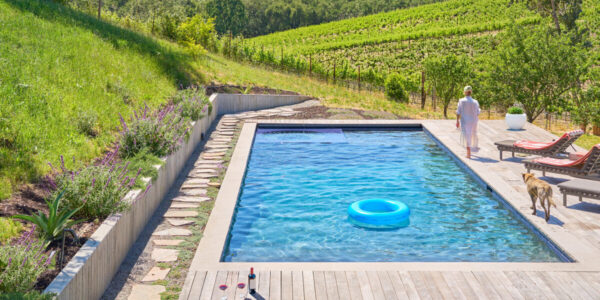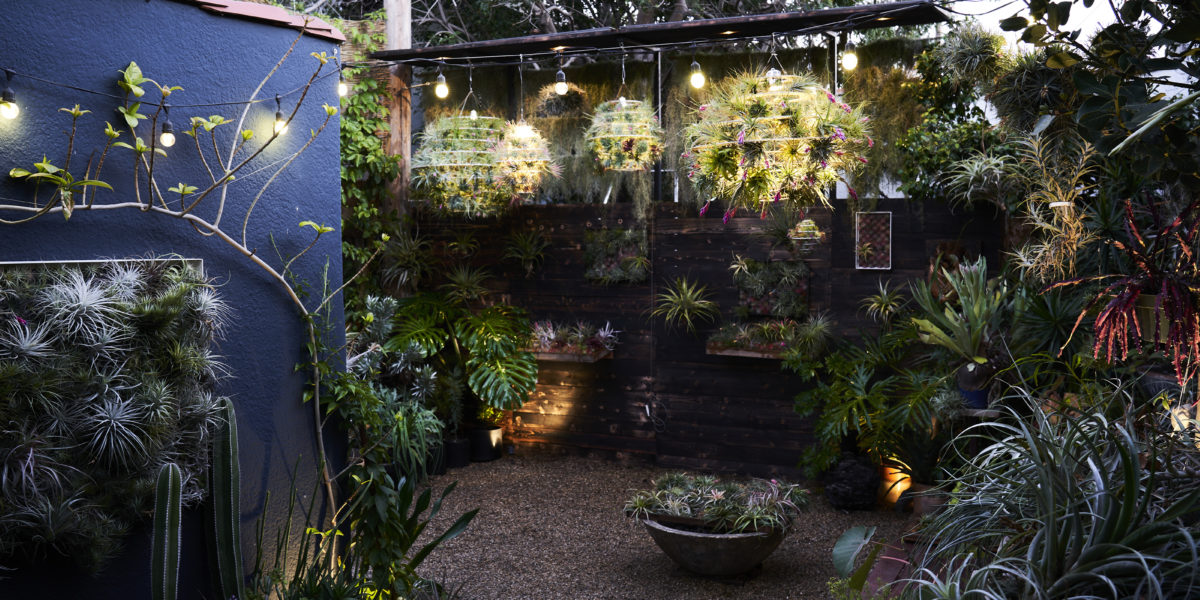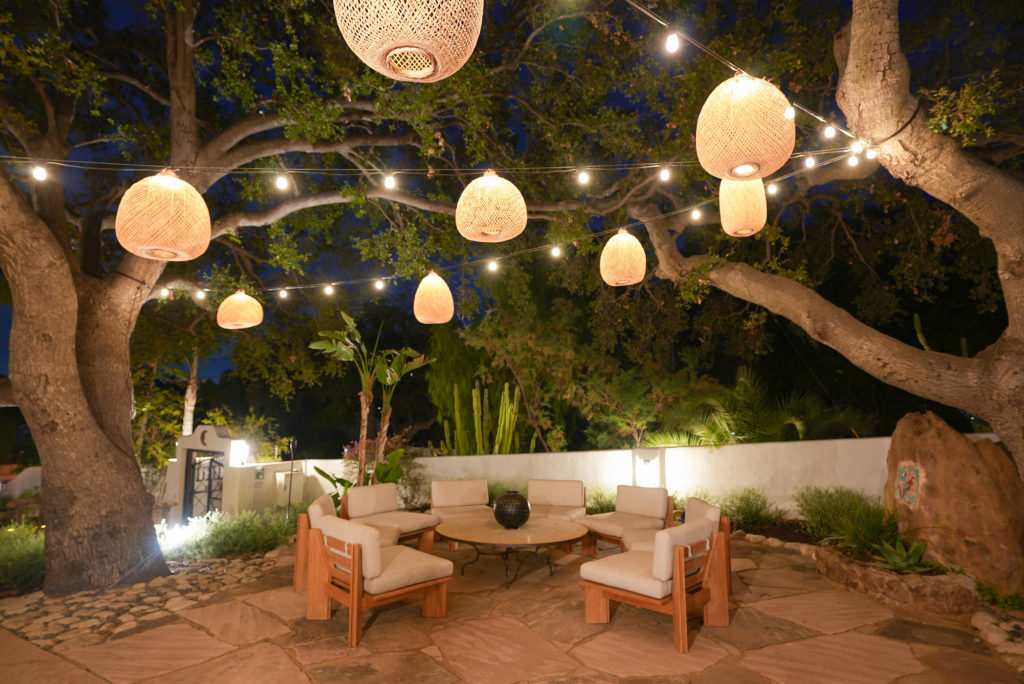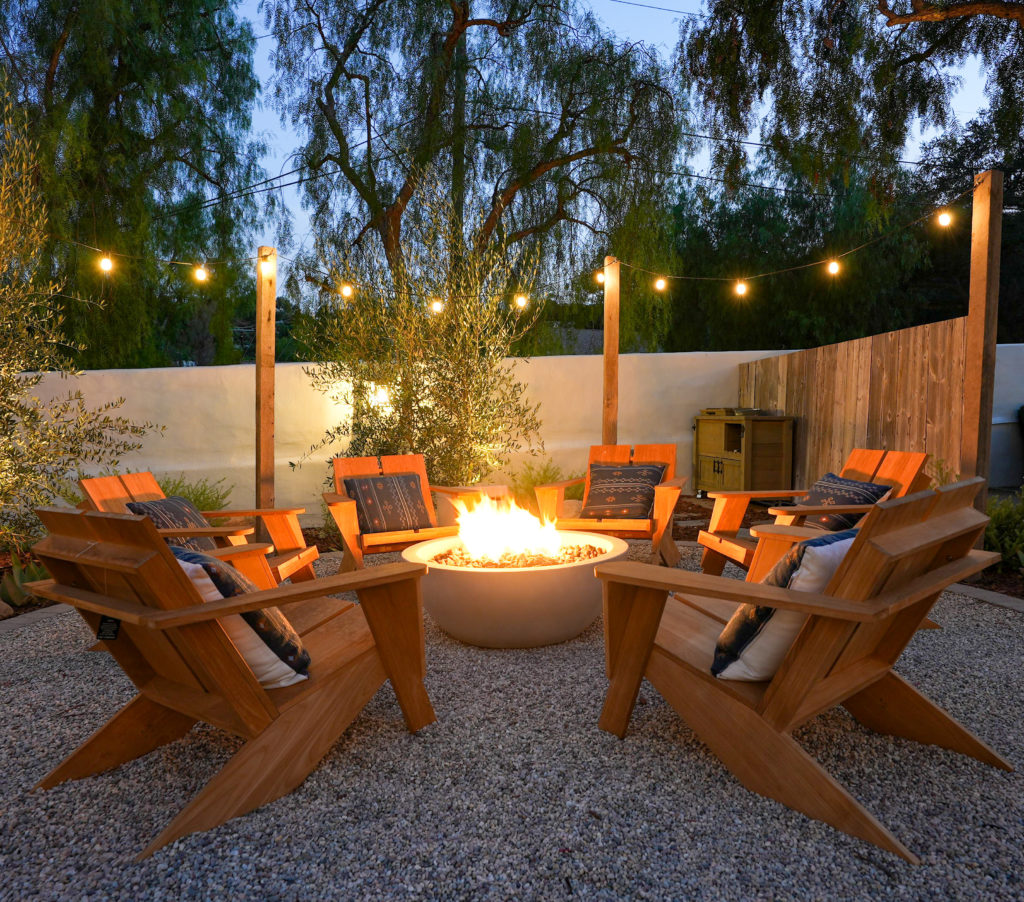
The Best Ways to Light Your Garden at Night
Lighting your backyard can create drama, safe spaces, and even a feeling of romance—just use these tips.

Thomas J. Story
When I first moved into my home, the backyard had a lot of potential. There was a patio space perfect for outdoor dining, a pool, stairs down to an area with two raised beds that were ready to be planted, and a small seating area where a fire pit would make a lot of sense. The only problem was that the garden only had one source of lighting: a floodlight on a motion sensor that would go on every time you approached the stairs. The effect was jarring, and the rest of the yard was as dark as night. Even the pool light was broken. Not only did my backyard give me the creeps, it just wasn’t usable in the evenings. Maybe you can relate.
The good news is there are lots of great ideas for how to light a garden. From string lights to pendants, to lights that give a “wash” over hedges or walls, there are so many ways to add drama and beauty—and banish scary feelings that keep you from enjoying your outdoor space after the sun goes down.
To light one stunning garden in Los Angeles, Kate and Ryan Gross of Kate Anne Designs relied heavily on string lights. “String lights are good because they give that overhead, entertainment area lighting,” Kate says. “It also feels like a twinkly sky a little bit. It brings that level of romance that I really like.”

Christian DuRocher
The pendants, which look custom, are really a DIY find. “You can search for bamboo pendants on Etsy and find things like them,” Kate says. To attach them to the string lights, they simply tied them on with the attached ties and placed them in a random pattern. Meanwhile, the home is owned by an executive at Fender, so she used string lights to create a backdrop for a firepit and jam session area as well.
Here, eight more tips on how to light your garden.
1. Don’t Overdo It
“Rule No. 1, for me, is do not over-light everything unless you’re playing tennis or making your way through a parking lot,” says Josh Rosen, a landscape designer also known as “Airplantman” thanks to his air plant lanterns and installations. “Too much light isn’t your friend.”
“Instead,” he says, “we like to create what we call a ‘hierarchy of lighting’ so we’re creating some focal points, layers, and giving the eye a variety of points to rest.” He adds, “I like to joke that evenly lighting everything is basically ‘Welcome to Vegas.’”
2. Create Layers of Light

Christian DuRocher
To create layers in West Hills, the Grosses used some downlights on the patio, ambiance landscape lighting to create a glow among the plants in planters, and up-lights on hedges and trees. “We also played with the brightness of the LED bulbs,” Kate says. “When we buy our up-lighting for the trees and hedges, those tend to be brighter than the bulbs that we buy for ambient lighting. Brightness is almost like using different colors—it adds contrast and depth to the garden.”
3. Create Focal Points
To create a dramatic focal point, be sure to light a large tree, a water feature, or a design element like a sculpture in the garden. “With trees, we do up-lighting so they become almost like glowing lanterns,” Rosen says.
Meanwhile, Rosen’s air plant lanterns and dramatic pendants can create focal points, too, especially since the lighting inside casts shadows that create patterns on the ground.
Focal points can also make a small yard look bigger. “You can use lighting to illuminate focal points at opposite ends of a yard—that creates this long sightline that gives the impression of a larger space,” says Kevin Lenhart, a design director at Yardzen, an online landscaping company. “It’s a cool trick if you have a yard with a smaller footprint.”
4. Be Safe
It’s not glamorous, but you need to be able to locate a path safely and walk down a flight of stairs while seeing where you’re going. Low-voltage light works great for this, says Lenhart. “They’re low hassle and use very little energy,” he says. (That said, he adds, “path lighting, up-lights, wall washes, decks—any of your standard landscape can be low voltage lighting.”)
5. Wall Washes and Uplighting
A steady rhythm on a big, blank wall or a line of trees is nice in a more formal design where the layout in the planting might be embracing rhythm or symmetry. Keep in mind that your light positions can take a cue from the gathering spaces and the way your plants are laid out.
6. Use Recessed Lighting
The trick with recessed lighting is that it must be installed when building a new concrete structure. The benefit is that recessed lighting directs light downward, which creates a nice glow without glare. “It’s also very architectural,” says Lenhart. “It’s like tracing a design element with a highlighter pen.”
7. Inexpensive Ideas Work, Too
Don’t forget about using candles and solar-powered path lights. Pendants with an extension cord can be cost-effective and easy to move. (Candles and pendants from Etsy are how I light my outdoor dining area. Click here for similar options.)
8. Leave Some Areas Dark
“The beauty of landscape lighting is the contrast between areas that are dark, areas that are glow-y, and areas that are a little bit brighter. That creates a natural look,” Rosen says.
“I’m definitely from the less-is-more school of thought,” agrees Yardzen’s Lenhart. “Strictly from a visual impact perspective, the fewer lights you use, the more drama each moment will have. And from an ecological perspective, fewer lights at night equals less light pollution and less disruption to the wildlife in your yard.” He adds, “People shouldn’t feel guilty about having lights in your yard. You just need to turn them off when you’re done using them.”
Read the Current Issue Here!
Get one year of Sunset—and all kinds of bonuses—for just $29.95. Subscribe now!
